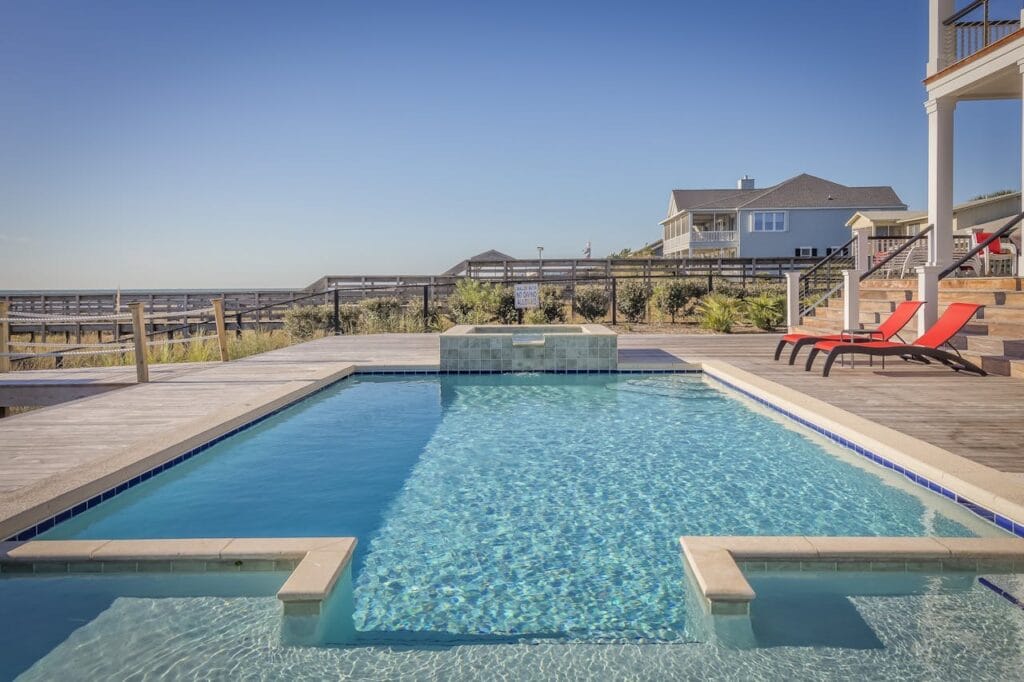Learn about Swimming Bath vs. Swimming Pool. Discover the key differences between swimming baths and swimming pools, from history to structure and purpose. Learn how they evolved into modern aquatic facilities today!
Swimming is among the simplest, purest forms of leisure and aerobic activities available in the world. Swimming baths and swimming pools are two terms that are often used interchangeably, but do not have similar meanings. Besides logic to that extent, there are still differences in structure, history, and use. This article discusses these distinctions in detail.
Definition and History
What is a Swimming Bath?
A swimming bath is primarily a very historical term, mostly referred to in the United Kingdom. Indeed, it is an indoor edifice designed for bathing, sanitation, and swimming. Public baths were designed in the late 19th and early 20th centuries to become publicly accessible facilities in which to clean oneself before the installation of plumbing in every household. Over the years, such facilities have evolved into sites for both healthful leisure and competitive swimming.

Key Features of a Swimming Bath:
- Indoor Facility: They will ensure that swimming baths can operate year-round without necessarily being all outdoors, be exposed to the elements, and take into consideration hygiene and comfort in a controlled environment
- Hygiene Focus: These facilities intend to improve sanitation in the urban setting by providing public bathing spaces for the promotion of cleanliness, especially in such cities where self bathing is not accompanied by well supply.
- Limited Recreation: Old swimming pools were constructed with the sole purpose of bathing and hygiene, having attached few recreational facilities or entertainment programs compared to pools in modern times.
- Historical Significance: Many of the older swimming baths have managed to survive, with several of these surviving properties turned pools retaining the old architectural charm yet providing new fitness and wellness services.
- Controlled Water Temperature: Heating of water in swimming baths to provide an all-season facility has visibly contributed to improved comfort and hygiene for its users, and ultimately to a happy bathing experience.
What is a Swimming Pool?
A swimming pool means not just a typical artificial swimming or leisure water body or sporting venue for swimming, but more correctly, a particular one for swimming purposes. Swimming pools are usually organized indoors or outdoors, and by size or depth. The swimming pool is a more understood term accepted all over the world that usually pertains to private, commercial, or public swimming pools.
Key Features of a Swimming Pool:
- Versatile Use: Swimming pools are designed for leisure, fitness, and competitive pursuits alike. They are spaces for recreation, exercise, and serious training within the public and private instances.
- Diverse Locations: Found at homes, resorts, gyms, and public parks, swimming pools give people, citizens, and athletes a chance to incorporate leisure and fitness in their surroundings.
- Varying Sizes and Shapes: They are built in different designs, i.e., Olympic ones to hold competitions, lap ones for exercise, or infinity ones mainly to glorify luxury.
- Filtration Systems: Among the updated technologies employed in modern aquatic facilities for filtration, chlorination, and sanitation are comprehensive and suitable for keeping water clean enough to guarantee a high degree of safety for swimmers
- Outdoor and Indoor Availability: Pools can be placed indoors, with artificial controls for temperature and humidity, or outdoors to enjoy openness with sunlight; whichever better suits the climate or one’s wish.
Structural Differences
Swimming Baths
- Usually located indoors and provided with bathing facilities, along with swimming areas.
- Often smaller in terms of size and rectangular in somewhat-shaped structure.
- Originally, it was equipped with separate changing facilities for men and women.
- Traditional architectural features would often include tiled flooring, high ceilings, and antique decor.
Swimming Pools
- It can be either outdoors or indoors and varies in size, shape, and depth.
- It is made mainly for purposes of recreation, swimming, training, or sports.
- Has different modern accessories such as temperature control, diving board, filtration etc.
- Found inside homes, hotels, schools, sports centers, and even public spaces.
Purpose and Usage
Swimming Baths
- Created to promote hygiene and public health.
- Served as a communal bathing area before personal bathrooms became common.
- Some historic swimming baths have been renovated into modern swimming pools.
- Used for leisure swimming, therapeutic purposes, and swimming instruction.
Swimming Pools
- Mostly for sports, exercise, relaxation, and social events.
- Different types will include lap pools, infinity pools, wave pools, and Olympic-sized pools.
- Used for competitive events, lifeguard training, and aquatic exercises.
- Commonly found in residential properties, luxury resorts, and sports complexes.
Modern Adaptation and Availability
- Swimming baths are terms that would mainly be used these days in a historical or regional context, especially in Britain.
- Facilities that were previously called swimming baths have been mostly renamed swimming pools.
- The name swimming pool is now popularly associated with any swimming establishment throughout the world.
- How we differentiate the common swimming baths from modern counterparts is sometimes rather hazy since some of these contemporary public swimming facilities have arrangements for sauna, steam room, and wellness.
Key Differences Between a Swimming Bath and a Swimming Pool
| Feature | Swimming Bath | Swimming Pool |
| Purpose | Originally built for hygiene and bathing | Built for recreation, sports, and leisure |
| Design | Often housed within bathhouses with additional facilities | Standalone structures or part of fitness centers, hotels, and homes |
| Terminology | Primarily used in historical British contexts | Commonly used worldwide today |
| Water Usage | Historically used for both swimming and bathing | Exclusively for swimming |
Evolution from Swimming Baths to Swimming Pools
Swimming has been gradually transformed into swimming pools with improvements in sanitation and plumbing, and public bathing became less frequent. Most former swimming baths have turned into renovated modern leisure centers, instead of hygiene; fitness and recreation have become the more important emphasis.

Importance of Swimming Pools Today
1. Health Benefits
Swimming pools are healthy, improve cardiovascular fitness, make muscles strong, and relieve stress. These water exercises are also low-impact and hence perfect for exercising joints.
2. Recreational and Social Value
Swimming pools are recreational centers where families and friends loiter and relax. The facilities help in promoting social interaction and community involvement via events and activities.
3. Competitive and Professional Use
Swimming pools are important in the sports arena, from Olympic swimming to diving contests. The Olympic swimming arena provides training grounds for athletes and sites for international competitions.
4. Aesthetic and Property Value
In terms of aesthetics and property value, private swimming pools contribute enormously to residential properties. Swimming pools designed specifically in luxury with modern elegance, such as waterfalls and infinity edges, add to the grandeur of homes and resorts.
FAQs
Are swimming baths still used today?
Swimming baths, which tend to have smaller pools and facilities for hydropathic treatment, may still be unequally termed, with large indoor swimming establishments retaining some of the functions attributed to the old swimming baths.
Can swimming pools be used for therapy?
Yes, certain swimming pools do contain distinct therapy sections, but swimming baths are typically aligned with rehabilitation therapies.
Do swimming pools always have a fixed size?
No, pools for swimming differ in great size, from small backyard swimming holes to huge Olympic-sized swimming pools for competitive competition.
Conclusion
Baths and swimming pools are so different concerning history, structure, and intended use. From being public sanitary facilities, they turned into extremely popular recreational and competitive swimming spaces.
Swimming pools have almost entirely replaced the concept of swimming baths, which they have almost entirely supplanted as a term of preference worldwide. Understanding that fact brings some appreciation for how public swimming-among other things-has evolved.
